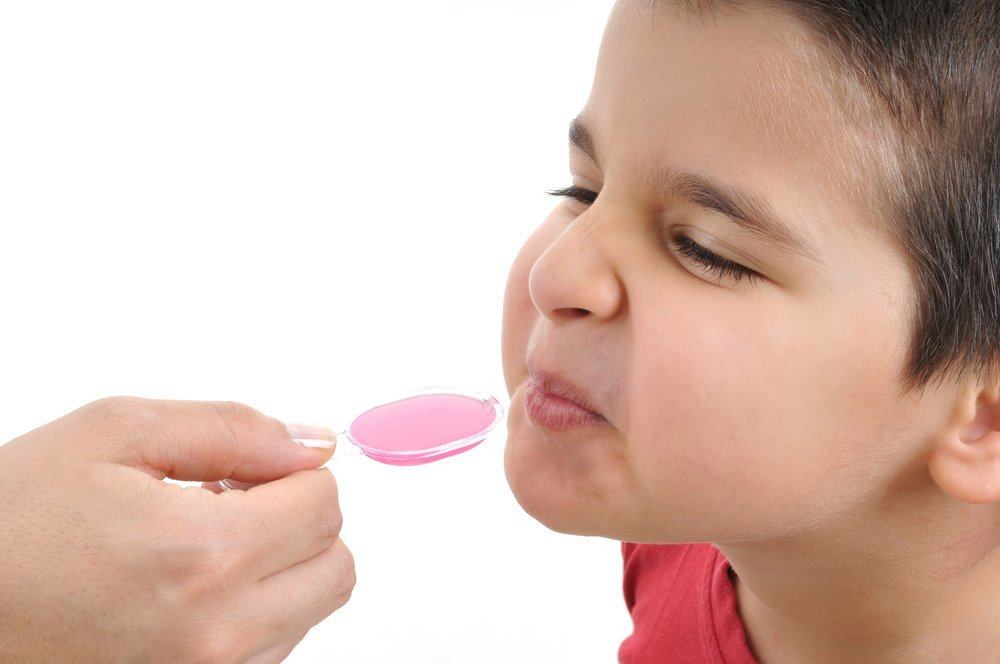Contents:
Medical Video: Safe Dose Dosage Range Pediatric Calculations Nursing Drug Math (Video 7)
Dealing with a sick child is not a pleasant experience for every parent, and the parent's instincts encourage you to immediately ease the pain. Medication provides valuable help, but the key to recovery is your ability to determine the right dose of pediatric medicine.
In an effort to ensure children get the right dose of medicine, the Food and Drug Association (FDA), reported from WebMD, has issued the latest guidelines for companies that produce, distribute, and sell non-prescription drugs that are packed with dropper, syringes, medicine spoons, and medicine cups.
The FDA said the release of a non-prescription drug dosage guide for children was carried out on the basis of concerns about the potential for accidental overdose as a result of measuring cups, spoons, or other devices not in accordance with instructions for use on drug labels.
Guidelines for measuring the dose of nonprescription drugs for children
The FDA guidelines recommend that every time you measure the dose of a non-prescription drug for a child, parents should always:
- Examine the label of the drug facts (dosage, composition, active ingredients, side effects, methods of use) that are listed on the drug label
- Recognize any active ingredients in general pediatric medicine
- Provide accurate in-dosage for children. Certain medicines for adults should not be used for children (eg aspirin)
- Consult with a doctor, nurse, or pharmacist to find out which drugs can be combined with other drugs, and which ones do not
- Know the difference between teaspoons and tablespoons
- Use a dose measuring device that is packaged together with medication, such as a dropper or cup dose
- Know the weight of a sick child. Pediatric doses are generally determined according to the child's age or weight. The dosage calculated according to body weight is much more accurate, especially if your child is smaller or bigger than other children of the same age (the drug will basically be diluted into body fluid volume; so the dose per body weight of each child will be different ) Therefore, make sure you know your child's weight so that you can provide information for your doctor or pharmacist if needed. If you use a non-prescription drug for your child and the dosage on the label only uses age guidelines, talk to your pharmacist for additional information
- Using drugs that are packaged with special covers that are difficult for children to tamper with
- Keep all drug supplies out of reach of children, and store them in their original packaging
- Check the medicine three times before giving it to the child
This guide illustrates how dosing doses using a special dosage device can minimize the risk of accidental overdose when using a liquid version of a non-prescription drug, such as cold medicine, cold runny nose, cough, digestive problems, and pain.
Avoid giving the wrong drug
To avoid making mistakes in prescribing medicines for children, some of these elements must be considered:
- The dose of the drug prescribed in milligrams (mg). If you are given a drug in liquid form, the pharmacist will convert this dose to milliliters (ml) according to the concentration of the drug. Follow your pharmacist's instructions accurately in order to give your child the right dose. Mistake treatment more often with drugs in liquid form
- Shake the liquid medicine formulation well before giving it to the child, especially oral suspension because the drug particles often settle at the bottom of the bottle. This is to ensure you measure stable doses in each use
- Follow the dosage. Even if the child seems very sick, don't change the dose or frequency of administration of the drug. If you are worried about your child's health condition, consult a doctor. Do not tamper with doses based solely on instinct
- If there is a missed dose, do not double the dose next time. Ask the pharmacist for what you have to do
- If your child vomits shortly after taking medication, talk to your pharmacist before giving the next dose. All drugs are not absorbed at the same level by the child, the pharmacist will consider this before giving you personal instructions
- Never compare drugs as sweets when persuading your child to take the dose. He will tend to consume it without your knowledge
- Tell your pharmacist if your child has difficulty swallowing tablet medicine. The same drug in a liquid formulation may be available. Talk to your pharmacist before cutting or destroying the tablet. The coating on tablets may be needed for the effectiveness of the drug. In addition, some coatings help cover unpleasant feelings from the drug
READ ALSO:
- 5 Things Parents Need to Know About Stomach Pain In Children
- Is it true that the environment is too clean to make children sick easily?
- Types of compulsory immunizations for children












